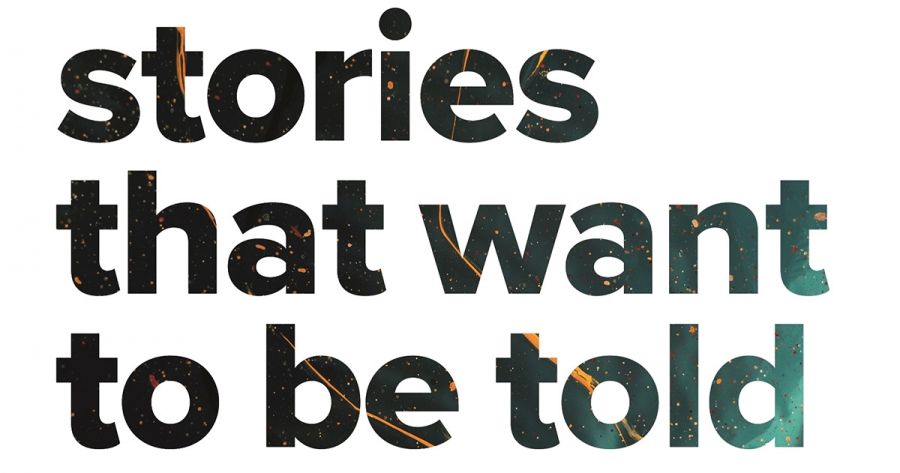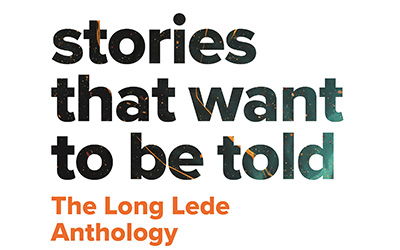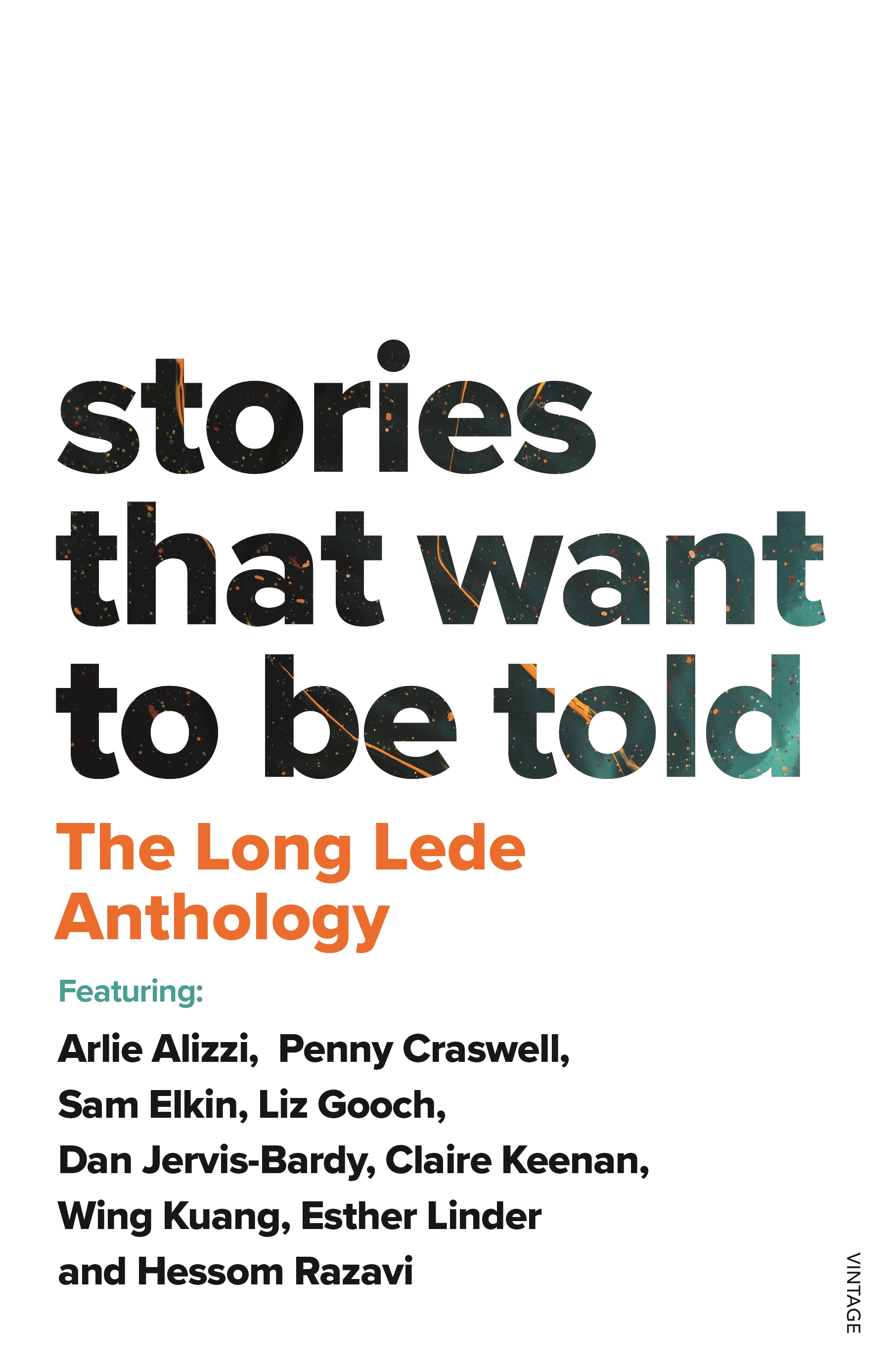
- Free Article: No
- Contents Category: Journalism
- Review Article: Yes
- Article Title: Personalities
- Article Subtitle: Stories that need to be told
- Online Only: No
- Custom Highlight Text:
Stories That Want To Be Told is an oddly flat title for this stimulating anthology. Most of its contents are stories that need to be told. Even those that do not quite succeed in becoming more than their authors’ ‘passion projects’ are likely to leave readers better informed and more curious about little-known facets of today’s world.
- Featured Image (400px * 250px):

- Alt Tag (Featured Image): Theodore Ell reviews ‘Stories That Want To Be Told: The Long Lede anthology’ by Arlie Alizzi et al.
- Book 1 Title: Stories That Want To Be Told
- Book 1 Subtitle: The Long Lede anthology
- Book 1 Biblio: Vintage, $29.99 pb, 249 pp
- Book 1 Cover Small (400 x 600):

- Book 1 Cover (800 x 1200):

The merit of these essays lies not (or not only) in the range of arresting subjects the writers have investigated or the urgent truths many have uncovered, but above all in the personalities they display as investigators, observers, and reporters. They achieve intimacy while managing not to let their presence interfere with the exposition and exploration of their subjects, which is the major risk in personal storytelling.
That collective feat is admirable, for each topic here is personally significant to its author and, in several cases, it is a deeply personal experience that keeps the reporting perspective direct and brings a theme home. Claire Keenan’s wry reflection on the presence and absence of religion in different stages of life, Penny Craswell’s tender and poetic vignettes on the cultural history of the humble cup, Hessom Razavi’s suite of recommendations for compassionate refugee policy (building on his ABR Behrouz Boochani Fellowship), and Arlie Alizzi and Sam Elkin’s examinations of trans lives on the margins (in the worlds of competitive powerlifting and the Victorian goldfields, respectively) derive their special understanding from the writers’ innermost lives and memories. Alizzi, particularly, lets the reader into his confidence with rare subtlety.
The other essays are just as involving, guiding the reader through the difficulties of research, interviewing hesitant speakers, and pondering gaps or contradictions in evidence. It is a great pleasure to watch these journalists at work. Each typifies the profession’s capacity to create sympathetic connections between dissimilar people. Razavi’s refugee policy recommendations appeal to a reader’s better nature and public spirit. Liz Gooch achieves a candid closeness to her essay’s central figures, female Afghani athletes outlawed by the Taliban, despite video-interviewing them from thousands of miles away. And Wing Kuang’s essay is a sharp reminder that community is always larger than we habitually think, not because Kuang says so, but because she creates such distinctive pen-portraits of a variety of people.
Clarity never lapses from one essay to the next, but not all are consistently fresh and lively in style. Even when the importance of the stories is clear, some of the authors tend to load their pieces with summary and explanation at the expense of action and demonstration. Esther Linder takes on the large-scale subject of supply chain resilience, which risks overloading the reader with statistics and descriptions of transport systems, leaving the human element – conversations on remote farms – somewhat dwarfed. Yet Linder compensates with thrilling depictions of outback driving, with all the sweep and thrumming rhythms that entails. Here, Linder’s prose finds a longer cadence than is typical for this book, and it suits the topic well.
The stand-out essay is Dan Jervis-Bardy’s account of investigating the mysterious unsolved death of a Sudanese refugee girl in Canberra. Jervis-Bardy’s achievement is as technically exceptional as it is gripping and poignant. He manages to extract eloquent detail from a police investigation with practically no leads, in which officials and witnesses are unwilling to talk or have vanished overseas, and whose chief subject, tragically dead, is without a voice. Jervis-Bardy’s salient point is that circumstances will not speak when prejudice will not hear. His frustration leads him to write tautly and intensely, evoking the tension in every silence. More than a reporter, he is a narrator.
The initiative that gave rise to these essays is to be applauded, but the book itself, as the caretaker of its contents, wants fire and focus. The introduction – questionably for a book of journalism, unattributed – celebrates the sponsors’ initiative and the commercial value of long-form journalism rather than explaining why and how these nine writers were selected, or why, if long-form work is valued, this initiative was necessary. It is necessary, but the reason is passed over in one bland understatement: ‘Australian newsrooms lack the bandwidth to foster new talent in this field and cultivate the craft of contemporary long-form journalism.’ Bandwidth? Lack of opportunity to develop specialised craft is a worsening cultural problem not confined to journalism. It deserves more searching and sophisticated discussion than that. This faint gesture underserves the anthology’s contents. There are stories here about unappreciated matters of life and death, but you would not know it from the sponsors, who say nothing about the stories’ social or moral imperatives. Each mentor provides a short introduction to their colleague’s essay, and here there is reflection on practice, if tinged with over-excitement. Celebrating talent is fair, but editorially the book behaves as though it is presenting credentials to recruiters rather than publishing reportage in the public interest.
I emphasise these editorial shortcomings because the nine featured writers and their mentors have worked harder, and on harder matters, than the book credits. If there are to be more books like this – and there should be – then discussion of the reasons why Australian journalism needs more opportunities for cultivating long-form reportage would serve the writers’ work and the sponsors’ aims more valuably. All nine writers here surely have important work ahead of them. Let us hope the editorial commitment to its purpose endures.


Comments powered by CComment